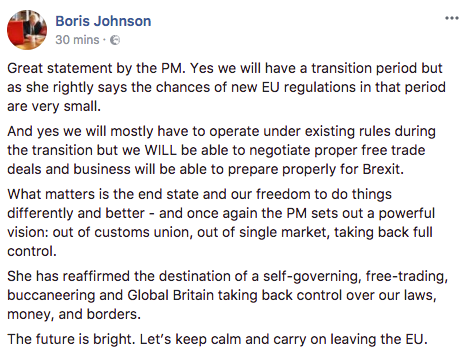The Government still has no idea how a frictionless border with Ireland would operate in the event of ‘no deal’ in the Brexit talks.
A policy plan published today on the UK’s future customs arrangements revealed the gap in the Government’s planning, with Downing Street asking for help from businesses on how to solve the problem.
Theresa May has repeatedly claimed there would be no physical border checks between Ireland and Northern Ireland once the UK leaves the EU, but has yet to explain how this would work if the two countries operate a different tariff system on goods.
With no checks on movements across the border, goods could move freely between the UK and the EU without businesses paying the correct tariffs.
Finding a solution to this problem is one of the areas the EU wants to see progress on in the Brexit negotiations before talks move on to a trade deal.
But the Government’s Customs Bill white paper reveals the UK is no further forward in finding a solution to this than it was in the summer.
Under the heading “Preparing for a contingency scenario” – effectively leaving the EU without a trade deal – the paper states:
“The government is committed to developing solutions to the issues that implementing a new customs regime would raise, particularly in the areas, such as ro-ro ports and the Northern Ireland-Ireland land border, that are likely to be the most complex. The government is seeking the views of businesses and other stakeholders on these solutions.”
The white paper was published - along with a similar document on post-EU trade - after the Prime Minister had delivered a statement on Brexit talks to the Commons.
It was May’s first grilling by MPs since she used a speech in Florence to announce a transition period of around two years after March 2019 before the UK enters into its new relationship with the EU.
Labour MPs were in a noticeably more buoyant mood than those on the Government benches, with many breaking out into laughter as the Prime Minister set out her plans for the Brexit talks.
May claimed that her Florence speech had helped moved the negotiations along, and she was hopeful the two sides “can now reach full agreement quickly.”
Answering questions after her statement, May risked the anger of some of hard Brexiteers by suggesting the UK would still be under the jurisdiction of the European Court of Justice after March 2019.
May had previously ruled out such a scenario, but in an answer to a question from Jacob Rees-Mogg she appeared to blur the red line.
She said: “We have to negotiate what will operate during that implementation period, and yes, that may mean we will start off with the ECJ still governing the rules we are part of for that period, but what we’re also clear of is that we can bring forward discussions and agreements on issues like a dispute resolution mechanism and if we could bring that forward at an earlier stage then we would wish to do so.”
Tory MP Peter Bone, who campaigned for Brexit, told HuffPost UK he was worried by May’s response: “It wasn’t a very good answer, that’s not quite how it’s supposed to happen.
“I am not sure whether they need to clarify that. It’s frustrating.”
Seeking to head of anger from his fellow Brexit campaigners, Foreign Secretary Boris Johnson took to Facebook to try to diffuse the row - despite claiming in an interview just over a week ago the UK should not accept any new ECJ rulings after March 2019.

Want to know what’s really going on with Brexit? Sign up for HuffPost UK’s Brexit Briefing - sent straight to your inbox every Thursday.
Former Labour leader Ed Miliband pressed May on her vision for the two year “implementation period”, asking: “Could she explain how the arrangements she is seeking for the transition differ from being members of the Single Market and the customs union for the period of the transition?”
May replied that after March 2019, the UK would no longer have “full membership” of the customs union or the Single Market, but during the two year period “we should be able to operate on the same basis and on the same rules and regulations.”
Miliband looked confused by the answer, and turning to a colleague said: “What does that even mean?”
Another Labour MP, Wirral South’s Alison McGovern, described May’s statement as “confusing” for putting forward seemingly contradictory positions on the UK’s future relationship with the EU.
McGovern said: “She says she wants the benefits of exactly the same terms of trade with the EU as we have now, for which we need regulatory equivalence.
“She also says we want the benefits of not being bound by EU rules in perpetuity for which we need regulatory divergence, and it’s a simple matter of logic that equivalence is the opposite of divergence.
“The Prime Minister is proposing she wants a thing and the opposite of that thing. How will she resolve this obvious contradiction?”
May responded that the UK and EU start from a position of equivalence, and “the key question is how do you manage divergence after that, it’s the same as you do in any trade agreement.”
